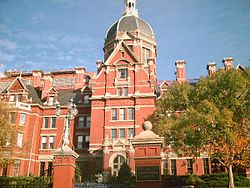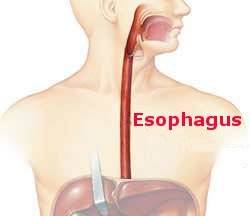Lung operations in humans arrive.
In 1931, Rudolf Nissen reported the first successful pneumonectomy (removal of an entire lung in surgeonese). His patient was a 12-year-old girl with chronic infection. She suffered a cardiac arrest during an initial attempt, was resuscitated and underwent the successful operation two weeks later. Nissen tied off all the lung’s blood vessels and bronchus (the hilum) with one stout cord. The lung, deprived of its blood supply, spontaneously sloughed off after several weeks. One year later, Haight at the University of Michigan duplicated Nissen’s feat. It again required two operations as the first attempt was aborted when the patient’s pulse rate shot up to 168 beats/minute. Clearly these operations stressed these two debilitated patients to their maximum limits. I also imagine the two surgeons were more than a little stressed themselves. But they persisted.
In 1933 at Barnes Hospital in St. Louis Evarts Graham performed the first pneumonectomy for lung cancer (and the first one-stage pneumonectomy) in a 49-year-old obstetrician. The patient was realistic; prior to his operation, unbeknownst to his surgeon, he purchased a burial plot. He must also have been reasonably confident as he proceeded despite being advised by Graham’s resident that there was a high likelihood of not surviving the procedure. Graham performed a left thoracotomy. To extract all the malignancy he had to remove the entire lung. He applied two clamps across the hilum of the lung, thus controlling the pulmonary artery, the two pulmonary veins and the bronchus. After cutting between the clamps, the lung was removed. There must have been silent awe as those at the operating table viewed for the first time in history the spectacle of an empty chest in a living person. (I can’t imagine this happening in Macewen’s operation as his patient’s chest was collapsed by all the inflammation.) Graham’s operative note describes his placing, perhaps after a deep breath, three “transfixing” sutures around the hilum and through the bronchus, removing the clamp and placing radon seeds to treat any residual cancer. After two months in the hospital the patient walked out in good condition and resumed his medical practice. The final pathological examination found that the lung cancer had spread to nearby lymph nodes. Despite the diminished prognosis caused by lymphatic spread, the patient’s cancer never recurred and he outlived his surgeon. Although Graham had established the feasibility of this operation, his success was short lived. His next several patients were consecutive fatalities and the sobriquet of the Butcher of Barnes Hospital arose. If the first patient had also failed to survive, lung resections would surely have been put on hold for some time.
Graham is important in the history of American Surgery for other clinical achievements. He was the co-developer of the first radiologic method to show the gallbladder making it possible to diagnosis acute cholecystitis. Secondly, working with a medical student, whose idea it was, an epidemiologic study of his lung cancer patients was one of the first to establish a correlation between smoking and lung cancer. The proof of actual causation took more time than necessary. There was vigorous suppression of evidence by the tobacco companies. Secondly, in the early limbo between correlation and causation, it was thought plausible that lung cancer caused smoking by inducing inflammation of the airways which stimulated coughing which could be “soothed” by smoking.



